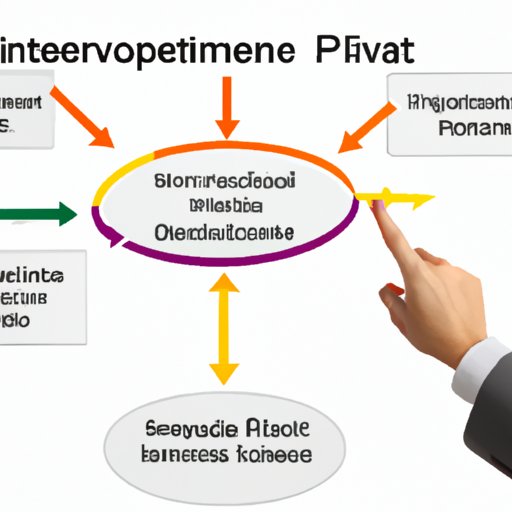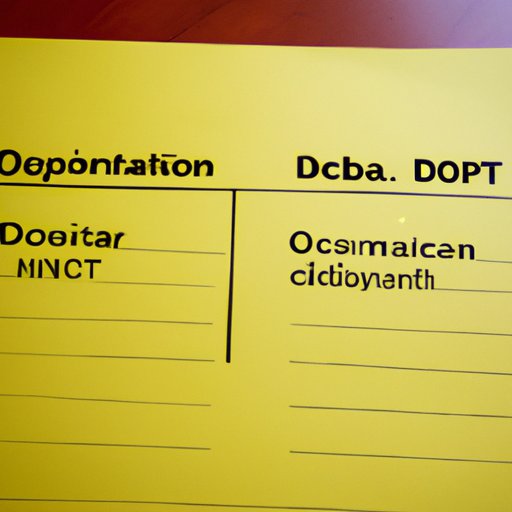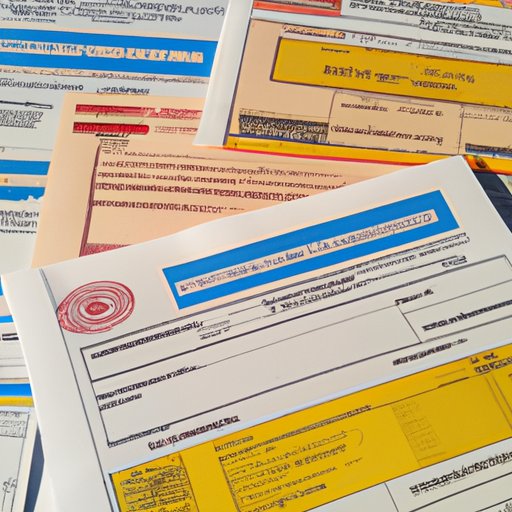
Explaining Certificate of Deposit Basics
A Certificate of Deposit, or CD, is a type of savings account that offers a fixed rate of return. CDs are typically issued by banks and other financial institutions, and they offer higher interest rates than traditional savings accounts. When you invest in a CD, you agree to leave your money in the account for a set period of time, usually ranging from three months to five years. In exchange for this commitment, you receive a higher rate of return than you would with a regular savings account.
How Certificates of Deposit Work
When you invest in a Certificate of Deposit, you’re essentially lending money to the bank. The bank will use the money you deposit to make loans or other investments. In exchange for your loan, the bank pays you a fixed rate of interest over the course of the term. At the end of the term, you can withdraw your money plus any interest earned.
What Fees and Penalties Are Associated With Certificates of Deposit?
Generally speaking, there are no fees associated with Certificates of Deposit. However, if you withdraw your money before the end of the term, you may be subject to a penalty. This penalty varies depending on the length of the term and the amount of money you withdraw. Some banks may also charge a fee if you close your CD early.
Comparing Certificate of Deposit to Other Investment Options
When considering an investment strategy, it’s important to compare different options to determine which one best suits your needs. Here, we’ll compare Certificates of Deposit to other investment options available.

Overview of Other Investment Options
Investment options outside of Certificates of Deposit include stocks, bonds, mutual funds, Exchange Traded Funds (ETFs), savings accounts, and money market accounts. Each of these options carries its own unique risks and rewards, and it’s important to understand the differences between them before making any decisions.
Differences Between Certificates of Deposit and Other Investment Options
The main difference between Certificates of Deposit and other investment options is the amount of risk involved. CDs are considered to be low-risk investments, while stocks, bonds, and other investments carry more risk. Additionally, the returns on CDs are generally lower than other investments. However, CDs offer a guaranteed rate of return and are FDIC insured up to $250,000 per account, so you know exactly how much money you will make over the course of the term.

Outlining the Advantages and Disadvantages of Certificates of Deposit
When deciding whether or not to invest in a Certificate of Deposit, it’s important to consider both the advantages and disadvantages. Here, we’ll outline the pros and cons of investing in Certificates of Deposit.
Advantages of Investing in Certificates of Deposit
One of the main advantages of investing in Certificates of Deposit is the stability they provide. Since the rate of return is fixed and FDIC insured, you know exactly how much money you’ll make over the course of the term. Additionally, since the money is locked up, you won’t be tempted to spend it. Finally, CDs are easy to open and manage, and they don’t require any special knowledge or expertise.

Disadvantages of Investing in Certificates of Deposit
The main disadvantage of investing in Certificates of Deposit is the lack of liquidity. Since the money is locked up for a set period of time, you won’t be able to access it until the end of the term. Additionally, the rate of return is usually lower than other investments, and if you withdraw your money early, you may be subject to a penalty. Finally, CDs are not suitable for short-term investments, as the rate of return is usually too low to justify the risk.
Examining the Different Types of Certificates of Deposit
There are several different types of Certificates of Deposit available. Each type has its own benefits and risks, so it’s important to understand the differences before investing.

Overview of the Different Types of Certificates of Deposit
The most common types of Certificates of Deposit are traditional CDs, jumbo CDs, zero-coupon CDs, and variable-rate CDs. Traditional CDs have a fixed rate of return and a fixed term, while jumbo CDs have a higher minimum deposit but offer a higher rate of return. Zero-coupon CDs do not pay out interest until the end of the term, while variable-rate CDs have a variable rate of return that changes over time.
Benefits and Risks Associated With Each Type of Certificate of Deposit
The benefits and risks associated with each type of Certificate of Deposit vary. Traditional CDs offer a guaranteed rate of return and are FDIC insured, but the rate of return is usually lower than other investments. Jumbo CDs offer a higher rate of return, but they also require a larger deposit. Zero-coupon CDs offer the potential for higher returns, but they also come with more risk. Variable-rate CDs offer the potential for higher returns, but they also come with the risk of losing money if the rate of return falls.
Discussing Strategies for Using Certificates of Deposit
When using Certificates of Deposit as part of an investment strategy, it’s important to understand the different strategies available. Here, we’ll discuss short-term and long-term investing strategies, as well as strategies for maximizing returns.
Short-Term Investing Strategies
For short-term investments, the goal is to maximize returns while minimizing risk. To do this, it’s important to invest in CDs with shorter terms. This way, you’ll be able to access your money sooner and take advantage of higher rates of return. Additionally, it’s important to shop around and compare rates to ensure you’re getting the best rate possible.
Long-Term Investing Strategies
For long-term investments, the goal is to maximize returns over the long-term. To do this, it’s important to invest in CDs with longer terms. This way, you’ll be able to benefit from compounding interest and take advantage of higher rates of return. Additionally, it’s important to shop around and compare rates to ensure you’re getting the best rate possible.
Strategies for Maximizing Returns on Certificates of Deposit
No matter what type of investment strategy you choose, there are certain strategies you can use to maximize your returns on Certificates of Deposit. These include investing in multiple CDs with staggered terms, taking advantage of special offers, and shopping around to compare rates. Additionally, it’s important to check the terms and conditions of any CD to ensure you understand all the fees and penalties associated with it.
(Note: Is this article not meeting your expectations? Do you have knowledge or insights to share? Unlock new opportunities and expand your reach by joining our authors team. Click Registration to join us and share your expertise with our readers.)
